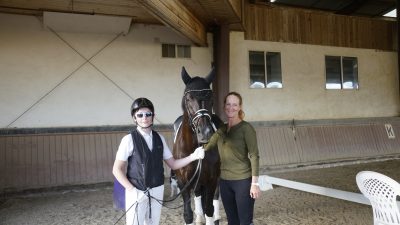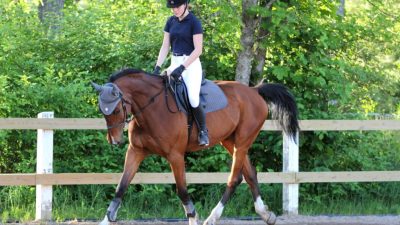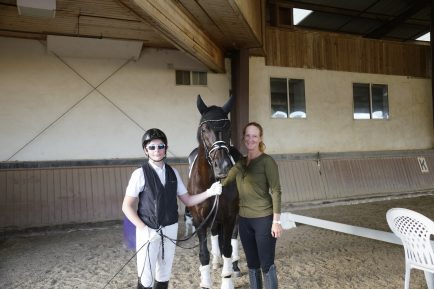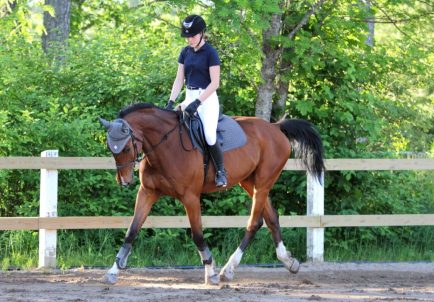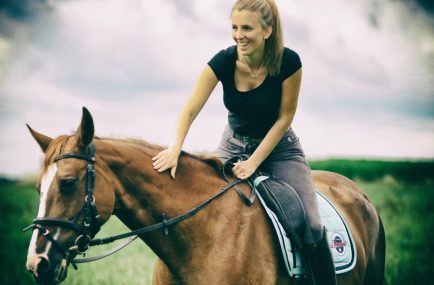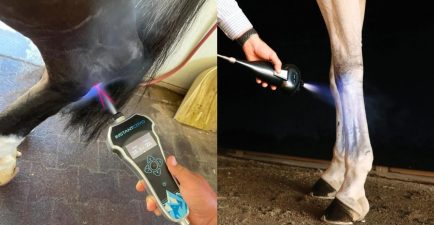A new scoring system developed by researchers at the University of Kentucky (UK) and beyond, promises to take some of the guesswork out of detecting and monitoring loss of muscle mass in horses.
The Muscle Atrophy Scoring System (MASS) is similar to the Body Condition Score (BCS) system, the nine-point scale designed to assess equine body fat levels.
“Like the BCS system, MASS uses descriptions of how body regions feel and look to determine a score,” says Alisa Herbst, BSc, PhD. “However, the MASS scores measure muscle mass instead of fat, using a 4-point scale system. My hope is that the MASS is as quick and easy to use as the BCS system.”
Recognizing changes in muscle mass is important, Herbst says, because “even minor loss can affect athletic performance, and larger losses can lead to weakness, which can reduce a horse’s ability to work and affect its welfare by causing difficulties with simple movements, such as getting up after lying down.”
In older horses and those with pituitary pars intermedia dysfunction (PPID), she adds, “a routine muscle atrophy evaluation is crucial to identify horses that have lost muscle and to subsequently investigate the cause and to establish a treatment plan.”
Although ultrasound and/or lab work can be used to evaluate muscle mass, these options are relatively costly and time consuming, says Herbst. Instead, horse owners and veterinarians tend to rely on visual assessments. “The issue with that approach is its subjectivity —ratings of the same horse by two individuals are hard to compare, and ratings over time have no reference.”
The MASS seeks to address these pitfalls and more. Its scores are based on the appearance and feel of a horse’s muscles in four target areas: the back, neck, belly, and hind region. In the first step of a MASS assessment, each of those areas on the horse’s body is assigned to either the “lean” or “adipose” (fat) category, which is tied to specific body-type evaluation tables. This is necessary, because “a fat layer on top of the muscle can make the muscle mass evaluation challenging,” says Herbst. “Therefore, the ‘fat’ tables include special guidance for the raters to facilitate differentiation between fat and the muscle to increase the accuracy of the muscle scores.”
The body-type tables and an illustrated reference guide are then used to assign each target area a MASS score, ranging from 1 (“no atrophy”) to 4 (“severe atrophy”). Unlike the BCS, MASS scores are not tallied to produce an overall number; scores are reported separately for each area.
In an initial test of the MASS system conducted at UK’s Gluck Equine Research Center, three raters independently assessed 38 horses of various ages, breed and health status. When their ratings for each horse were compared, the data showed good-to-excellent agreement for scores of the neck, back and hind regions but poor agreement for the abdominal/belly region—indicating much lower reliability for those scores.
The researchers also found that, as would be expected, higher MASS scores were correlated with advanced age and PPID. These findings, the researchers say, “support further evaluation of the potential benefits of MASS to identify and monitor muscle atrophy in horses.”
Horse owners and veterinarians can start utilizing the MASS system now, even as researchers continue to test and refine it, says Herbst, but “users should be aware that some validations are still ongoing and they should stay tuned for more information on the system’s accuracy and further updates.”
Reference: “Development and evaluation of a Muscle Atrophy Scoring System (MASS) for horses,” Journal of Equine Veterinary Science, September 2021.
Original article: A new way to evaluate loss of muscle mass in horses – Equus Magazine
www.royalequestriancollection.com – check our website to purchase and enjoy our products for your horses and you.









